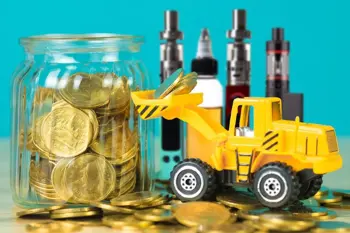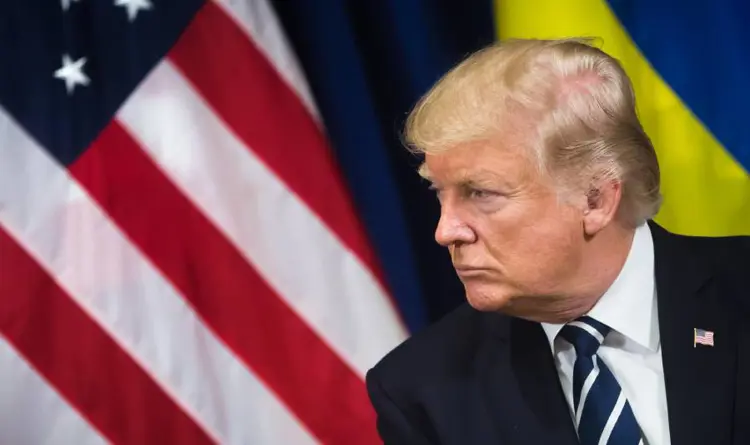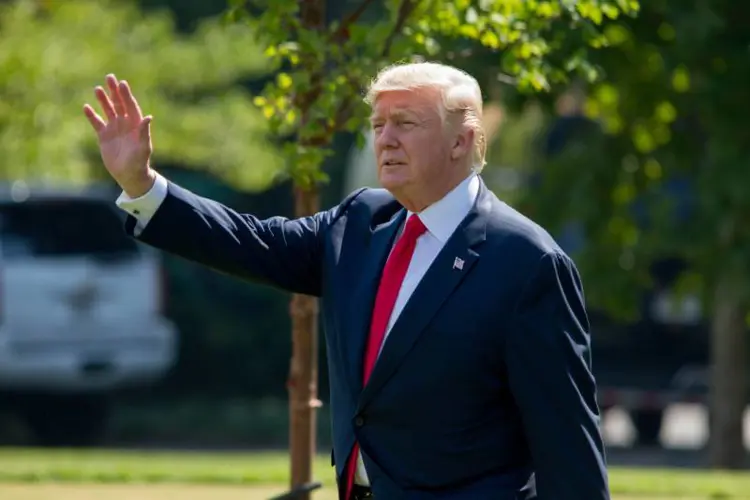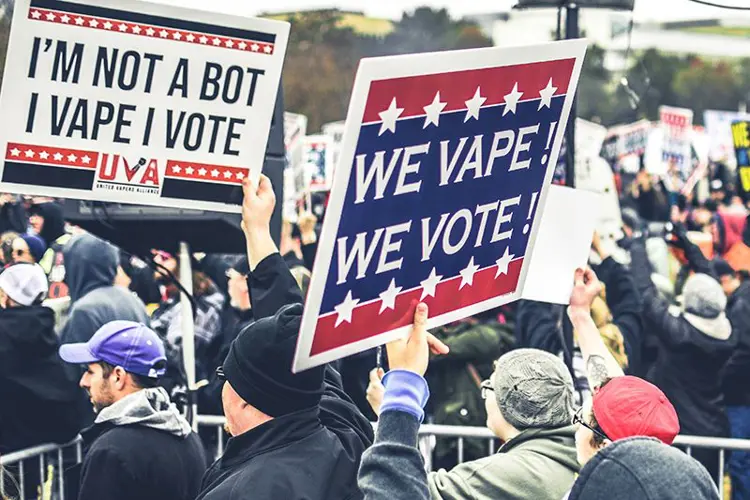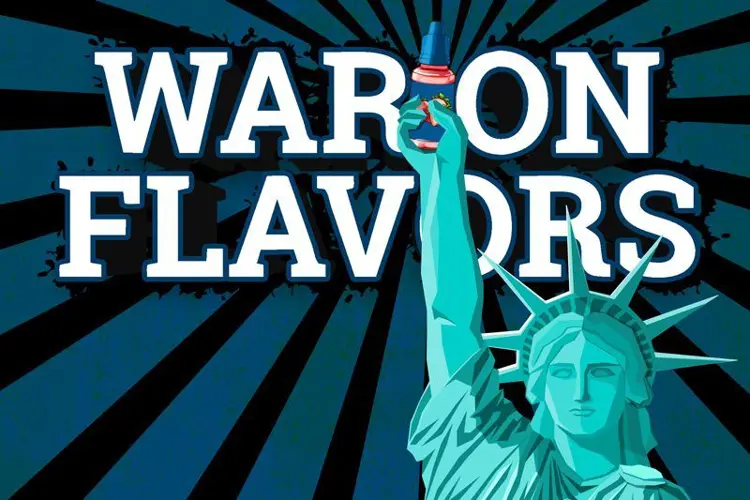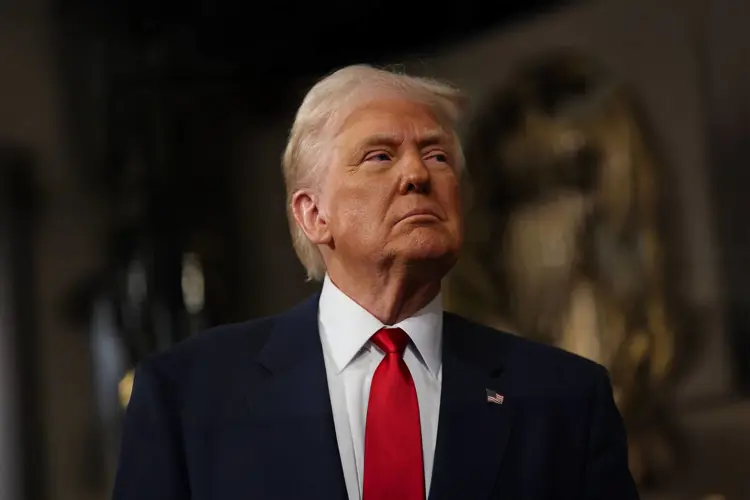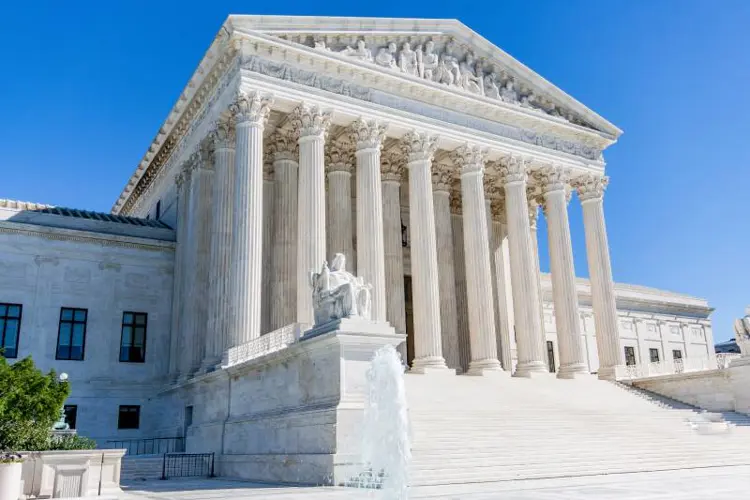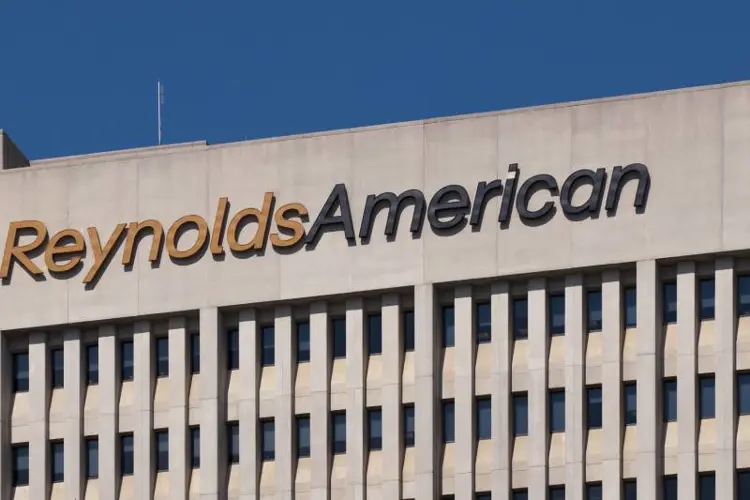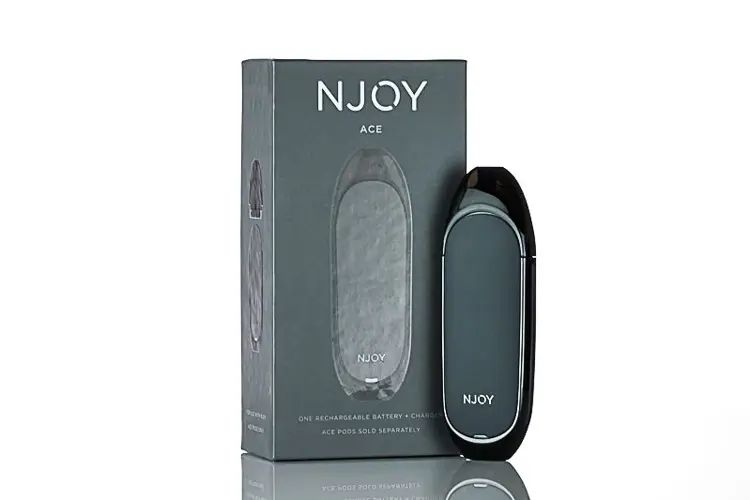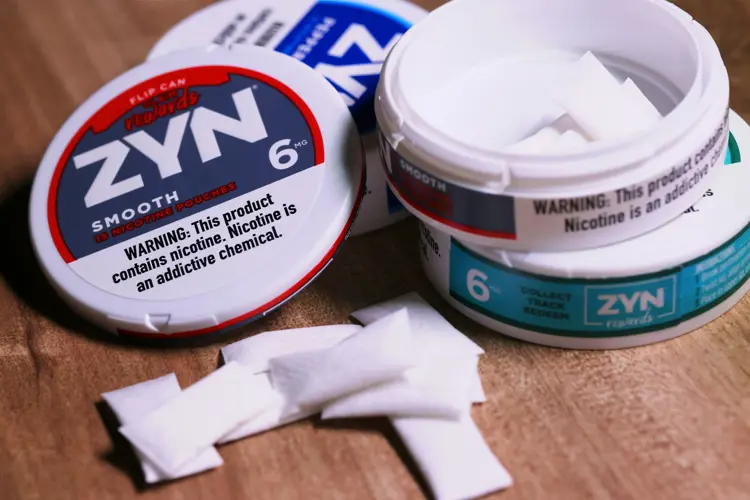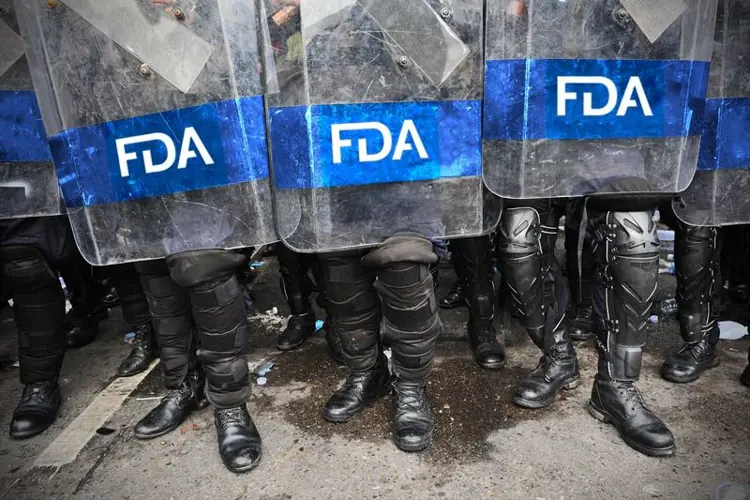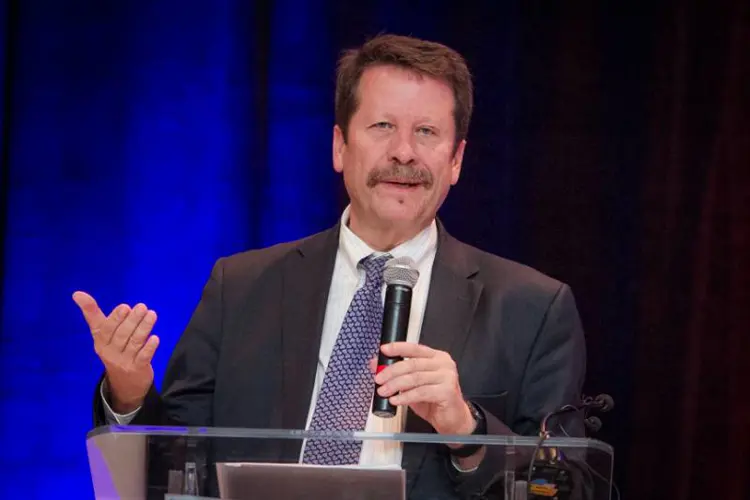In a story published Sunday evening, the Washington Post reported that President Trump has taken no action on flavored vaping products. The inaction is attributed to Trump’s concern over potential lost votes in 2020 battleground states and job losses.
The story was a big one across Washington, not because of concern over vaping kids or lost harm reduction opportunities for adults, but because it is another example of the President backtracking on previous commitments. Oh look, said the pundits, he backed down again after being lobbied, just like he did with immigration and background checks on guns.
But that wasn’t exactly what happened. It was mostly the efforts of vapers and small business owners that changed the course of the FDA flavored vape ban. The Post story and all the others that followed were solid evidence that two months of phone calls, emails, VTA television commercials, Twitter posts, and a Washington D.C. vaping rally made a real impact, along with some heavy lifting by Paul Blair of Americans for Tax Reform (ATR).
The story is the first time we’ve seen in print that our efforts—including the Washington rally and other protests at Trump campaign events—have been noticed by the President. It’s exciting news for vaping consumers and the independent vaping industry, and hopefully it will help keep vapers active and engaged, because the issue is still far from settled.
Some vapers have the idea that the President has backed down on the flavor ban, but that’s not correct. As far as anyone knows, Trump hasn’t actually made a concrete decision yet, and he still has a group of powerful and trusted advisers—including his wife Melania, daughter Ivanka, Senior Counselor Kellyanne Conway, and Health and Human Services Sec. Alex Azar—telling him to ban vape flavors. In fact, even if he decides not to ban them, that decision itself may ignite a firestorm of resistance from powerful tobacco control and medical lobbying organizations that will lead to something even worse.
Between the “epidemic of youth vaping” and the outbreak of serious lung injuries caused by vaping black market THC oil cartridges, vaping is now daily front-page news. With high visibility comes increased pressure to solve the perceived problems. And the two issues are regularly being confused by public health agencies like the CDC, as well as politicians and the news media. The CDC seems to be deliberately conflating the two kinds of vaping in order to drive a stake into the heart of nicotine vaping once and for all.
There is a rumor that Mrs. Trump caught their son Barron vaping, or (in another version of the rumor) was worried that he might start. Whether that’s true or not, it’s a fact that the First Lady signed on to the Truth Initiative’s anti-vaping initiative, and has taken part in more than one Truth anti-vaping event at the White House, along with Kellyanne Conway.
Trump’s anti-vaping advisers convinced him to announce a ban on flavored products in September, partly by selling him on the idea that the move would gain election support among suburban parents (and especially women). But no one warned Trump that his ban might awake hostility from an unexpected and mostly unknown source: vapers.
The Trump administration announcement was greeted like a declaration of war by vapers. They immediately sprang into action. CASAA launched a White House calling and email campaign. Vaping YouTubers like Matt Culley, Nick Green and Ruby Roo drove new followers to Twitter, where the hashtag #WeVapeWeVote became so ubiquitous that vaping Twitter was accused of being a collection of bots. And organizers of a planned spring 2020 rally in Washington changed gears and began planning to hold the rally in November of this year.
Paul Blair argued publicly and in private conversations with White House and Trump campaign officials that the suburban parents Trump was hoping to impress with a flavor ban were unlikely to be single-issue voters. But, he said, ATR had polling data showing how vapers, angry at a flavor ban, could ruin the President’s reelection chances. Trump won so many states by small vote margins in 2016 that it wouldn’t take many vapers to vote against him—or even just to stay home on election day—to swing the 2020 result the other way.
Trump campaign manager Brad Parscale listened. And when VTA commissioned another poll by McLaughlin & Associates—a firm that had conducted polls for the Trump 2016 campaign—showing that 97 percent of vapers polled in battleground states “strongly oppose” a flavor ban, the evidence was apparently strong enough to convince the President.
Trump backed away from the ban on Nov. 4, the night before HHS and FDA officials were scheduled to hold a press conference to roll out the ban. According to the Post, he said he was worried about angry vape shop owners and their customers, and job losses. Trump blamed HHS Sec. Azar for pushing him to ban flavors without warning him about the pushback he would get.
Some administration officials told the Post that Trump could still change his mind. Others said they think the initiative is dead. The issue is not as urgent now, they said, because JUUL has voluntarily removed its popular mint pods from the market. Additionally, as Paul Blair points out, the CDC has finally conceded that vitamin E acetate in black market THC cartridges is apparently responsible for most of the lung injuries.
But those things will not satisfy tobacco control extremists. Having come right to the brink of achieving their longtime goal of banning vape flavors, they will not rest until it happens. If President Trump doesn’t allow the FDA to ban them, the single-minded anti-vaping activists will pursue their goal elsewhere—in Congress and in the states.
Aside from the recent emergency flavor bans in several states, no state has passed a ban through the normal legislative process. Tomorrow, Nov. 20, the Massachusetts Senate will decide whether to become the first state to do so.
And flavors will be a moot point if the FDA is able to enforce its PMTA requirement as scheduled. On May 12, 2020 all vaping products, flavored or not, will be removed from the market unless the manufacturers have submitted an application to the agency. There are lawsuits that might disrupt the plan, but unless one of them succeeds the independent vaping industry will essentially shut down on that date.
"If we avoid this ban, our next focus will be on ensuring that the Trump administration recognizes the need to reform the FDA's regulatory system for these products,” says American Vaping Association President Gregory Conley.
If President Trump wants to keep those vaper votes next fall, saving flavors now won’t be enough. “If President Trump wants to win in 2020,” says Conley, “mere inaction on this issue is not enough, as the countdown clock to May 11, 2020, has now begun."
Former FDA commissioner Scott Gottlieb said in a tweet Sunday night that convincing Trump to not act is a Pyrrhic victory for the vaping industry. That means it’s a win that will also destroy the vaping market. He could be right. Certainly the inaction from the White House will whip anti-vaping organizations and their congressional allies into a frenzy.
There are already multiple bills working through Congress that could cripple or kill the independent industry, including vape shops. Currently, they may have a hard time navigating the Republican-majority Senate. But more Republicans are signing on to anti-vaping bills, and the Senate won’t be Republican forever.
If Democrats take both houses of Congress next fall, we can expect draconian vaping restrictions introduced in the 2021 legislative session. Even if President Trump is re-elected, he probably wouldn’t stand up against a flavor ban consensus when he no longer has an election to worry about.
Meanwhile, billionaire ex-New York City mayor Michael Bloomberg has invested $160 million in efforts to ban flavored vape products. That money is flowing through the tobacco control funding system now, and already-powerful groups like Campaign for Tobacco-Free Kids are using it to juice up influence in a network of like-minded organizations. They’re all focused on poisoning the well of public opinion against vaping, ensuring more bans, restrictions and taxes.
Vapers’ work isn’t close to being done. We will have to remain active and vigilant, and work to be better organized and armed for more battles.
The Freemax REXA PRO and REXA SMART are highly advanced pod vapes, offering seemingly endless features, beautiful touchscreens, and new DUOMAX pods.
The OXVA XLIM Pro 2 DNA is powered by a custom-made Evolv DNA chipset, offering a Replay function and dry hit protection. Read our review to find out more.
The SKE Bar is a 2 mL replaceable pod vape with a 500 mAh battery, a 1.2-ohm mesh coil, and 35 flavors to choose from in 2% nicotine.
Because of declining cigarette sales, state governments in the U.S. and countries around the world are looking to vapor products as a new source of tax revenue.
The legal age to buy e-cigarettes and other vaping products varies around the world. The United States recently changed the legal minimum sales age to 21.
A list of vaping product flavor bans and online sales bans in the United States, and sales and possession bans in other countries.




